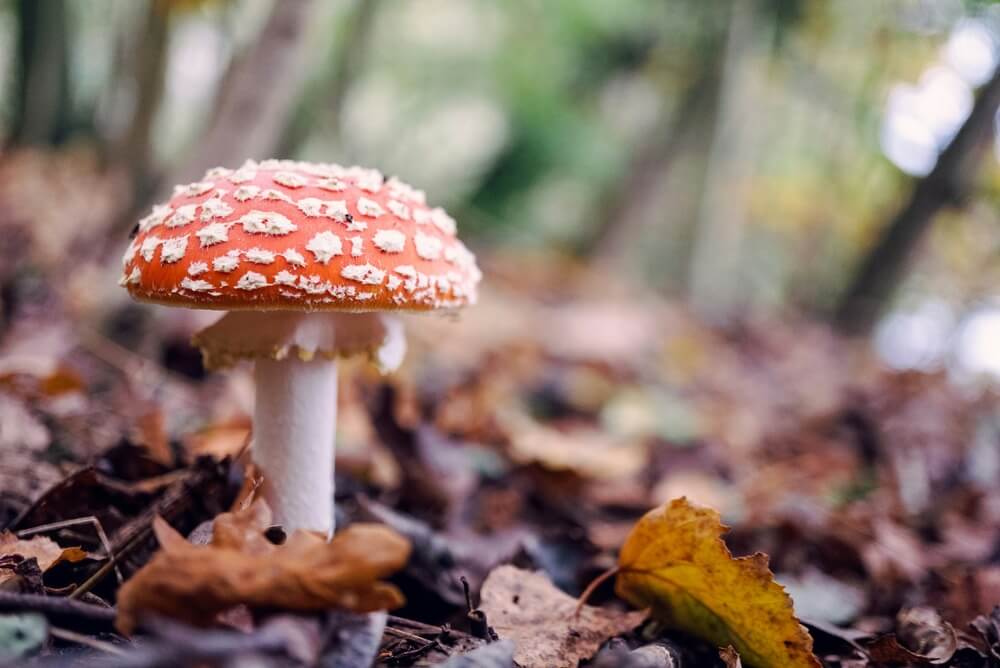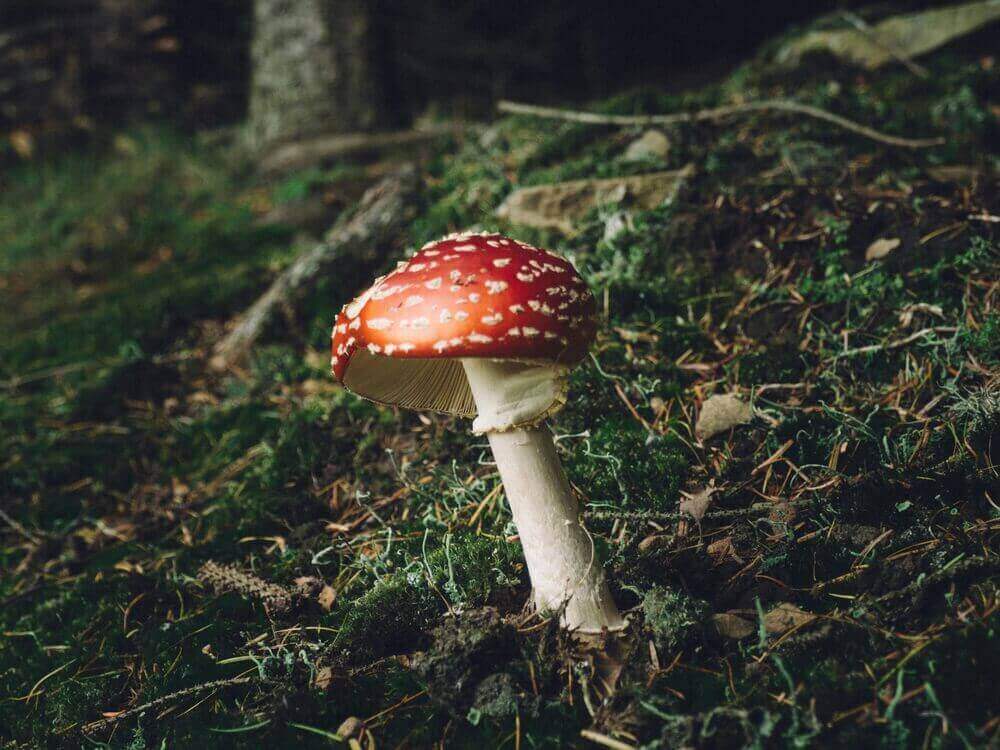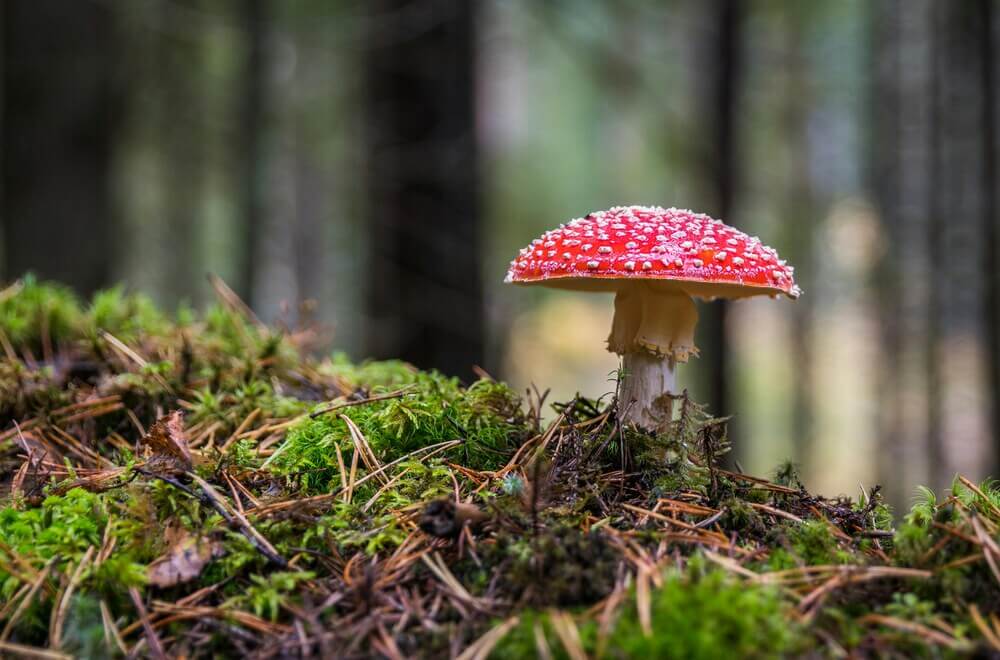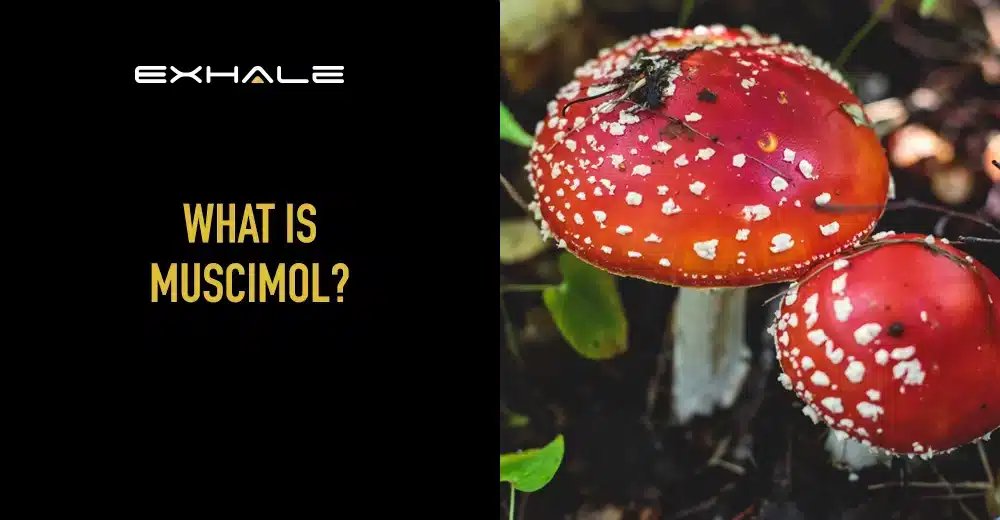Muscimol, a compound often associated with Amanita muscaria mushrooms, holds a mystique that intrigues both scientists and enthusiasts of altered states alike. This psychoactive substance, derived from the revered fly agaric fungus, possesses a multifaceted pharmacological profile that elicits a range of effects upon ingestion. Understanding what muscimol is and its implications is essential for those delving into the realms of mycology, psychopharmacology, and cultural exploration.
At its core, muscimol is a potent hallucinogenic compound known for inducing altered states of consciousness characterized by vivid sensory experiences and profound introspection. Originating from the Amanita muscaria mushroom, muscimol has been historically revered for its role in shamanic rituals and spiritual practices among various indigenous cultures. However, its effects are not limited to the spiritual realm, as modern research continues to unravel the pharmacological complexities of this enigmatic substance. Delving into the depths of muscimol unveils a journey rich in scientific inquiry, cultural significance, and the exploration of human consciousness.
What is Muscimol and Its Effects
What is Muscimol? Muscimol is a compound found in Amanita muscaria mushrooms. It belongs to the class of isoxazoles and is one of the primary psychoactive constituents in Amanita muscaria (the fly agaric mushroom). It is known for its role as a GABA agonist, nitrogen, and psychotropic substance.
We can trace the use of Muscimol back to the cultural practice of ingestion of Amanita Muscaria in Siberia and other parts of the world. The purpose was typically to induce vivid dreams and mystical experiences that could foster personal and spiritual growth. Its usage has evolved in recent years, and so has its relevance to the scientific and human community. An in-depth analysis of its concentration and chemical composition can help explore its benefits.
What is Muscimol?
Muscimol is a compound in the isoxazole family. It is primarily responsible for the psychoactive effects of Amanita muscaria mushrooms, like the magic ingredient that gives these mushrooms their unique properties. Physically, Muscimol has a white, crystalline form and is soluble in water. Its chemical structure consists of a bicyclic ring system with a hydroxyl group and an isoxazole ring.
The concentration of Muscimol in Amanita muscaria mushrooms typically ranges from 0.1% to 1% of the dry weight. This concentration can vary depending on factors such as species, growth conditions, and the age of the mushroom. Fresh mushrooms generally have a higher concentration of Muscimol than dried ones due to the decarboxylation of ibotenic acid during drying.
Regarding accessibility and availability, Muscimol is subject to controlled substance laws in most states. For example, Louisiana regulates cultivation, possession, and consumption in accordance with federal guidelines. While recreational and spiritual use may not be permitted, academic and research institutions may have access to scientific investigation into its pharmacological properties.
Does Muscimol Have Potential Benefits?
When discussing its benefits, it’s essential to understand its role in the mushroom and how it interacts with our bodies. Muscimol acts on our central nervous system. It causes sedation, relaxation, and altered perception. Some people believe it may have therapeutic potential. It could reduce anxiousness and promote relaxation.
Let’s look more closely at each of these effects to better understand Muscimol and its interaction with the human body:
- Sedative Effects. Muscimol helps quiet down the activity in your central nervous system, promoting a sense of tranquility and peace. The sedative effect can help those with anxiousness, everyday discomfort, stress, or insomnia. It has anxiolytic properties. The effect can calm racing thoughts and promote better sleep.
- Muscle Relaxation. It can cause muscle relaxation and may even induce a feeling of heaviness or “body load” in some individuals. This physical relaxation is often accompanied by the substance’s mental effects.
- Euphoria. Muscimol is a psychoactive compound with psychedelic and euphoric effects. It interacts with our brain and central nervous system to induce hallucinations. Some may find these experiences enjoyable. Others may find them uncomfortable or overwhelming. This is why you must consider the pros and cons of consuming Amanita muscaria mushrooms.
- As with all mind-altering substances, it’s essential to approach the use of Muscimol with caution. It may offer temporary relief from specific symptoms. But its sedative effects have risks. This is especially true when consumed in large quantities or without proper knowledge. Eating Amanita by accident can lead to Amanita muscaria poisoning, which can cause nausea, vomiting, and confusion.

Psychotropic Effects of Muscimol
What makes ingesting Amanita Muscaria so trippy? Amanita muscaria’s psychotropic properties (ibotenic acid and Muscimol) are primarily responsible for its intoxicating effects. However, the most crucial question should be, “Why do these effects affect the human mind and body?” Well, we have the GABA receptors to thank for that.
GABA, what is that? Gamma-aminobutyric acid (GABA) is an inhibitory amino acid that functions as a major neurotransmitter for the central nervous system. This chemical blocks specific signals, thereby slowing the activities of the brain and spinal cord. There exist two distinct types of GABA receptors: GABAa & GABAb receptors.
GABAa receptors, also known as ligand-gated ion channels, are ionotropic receptors. They are the main brain neurotransmitter receptors. They help with issues like depression and insomnia. Meanwhile, GABAb receptors cause long inhibitory action by activating o-type proteins.
When GABAa receptors bond with acid (ibotenic acid in this case), they reduce a nerve cell’s ability to receive, create, or send messages. Muscimol is a strong GABA receptor agonist in Amanita Muscaria shrooms. When consuming these shrooms at a psychoactive dose, they bind to the GABAa receptor. This affects the brain’s neurotransmitters to cause sedation, muscle relaxation, and altered consciousness.
How to Use Muscimol Safely
You might wonder how to safely enjoy Amanita muscaria mushrooms, especially with several cases of Amanita pantherina poisoning. Thanks to technology, Muscimol is well tolerated. Especially when consuming it as an extract with very little ibotenic acid and muscarine. In its pure state, Muscimol is very unlikely to cause mushroom poisoning.
To ensure a great trip, always pick Amanita Muscaria products. They must have pure Muscimol and ibotenic acid. They must have passed third-party testing. And, they must come from reputable brands like Exhale. If your Amanita products check all these boxes, then you can eat them. But, to be safe, here are some tips for enjoying your Muscimol safely:
- Use of tinctures. Amanita muscaria tinctures are primarily available in small bottles with droppers measured in milliliters (ml). These bottled extracts are designed to deliver the mushroom’s effects in a concentrated, easy-to-use liquid form. This functionality makes tinctures popular for microdosing or topical use. While using tinctures, manufacturers recommend starting with minimal muscimol doses (1 to 3 drops) and gradually increasing till you get your desired effect.
- Dosage and tolerance level. Depending on the potency, a low dose might range from 0.5 ml to 1 ml. This dosage is intended to produce mild effects, like relaxation or mood enhancement, while a high psychoactive dose could be 2 ml or more. This level is likely to produce intense psychoactive experience and should be approached with caution, especially by those with less experience and a low tolerance level.

Does Muscimol Have Any Therapeutic Potential?
Researchers have been intrigued by Muscimol and its potential therapeutic applications. While much of the research on Muscimol is still in its early stages, there is growing interest in its effects on the central nervous system and its possible medical benefits. And its potential therapeutic applications.
Muscimol has also shown the potential to help with symptoms of addiction and depression. For example, Muscimol increases dopamine release. This may explain its potential to help with addiction. It also enhances the effects of serotonin in the hippocampus. This brain region regulates mood. This effect may explain why Muscimol could help with depression.
Also, Muscimol interacts with specific brain neurotransmitter systems. This may make it a remedy for conditions like epilepsy and Parkinson’s disease. One major concern, though, is its potential for abuse or addiction. We still don’t know the best dose and long-term safety of Muscimol in humans. We need more research to fully understand its risks and benefits as an antidepressant treatment.
Potential Side Effects of Muscimol
As much as Muscimol boosts moods and uplifts spirits, underestimating its potency is dangerous. Effects of high dosages include headache, nausea, involuntary body movement, hallucinations, restlessness, and confusion. Excessive sleeping is also a common adverse effect of Amanita muscaria. In rare or severe cases, excessive dosages can cause excessive salivation and sweating, abdominal cramps, coma, and seizures.
FAQs About Muscimol
Welcome to the FAQ section, where we address common queries surrounding muscimol and Amanita muscaria mushrooms. Whether you’re seeking clarity on safety, legality, or consumption methods, we’ve compiled answers to your most pressing questions.
-
What does Muscimol do to the body?
Muscimol binds with GABA receptors, enhancing neuronal inhibition and greatly reducing physical discomfort. It also causes psychedelic effects, such as a lucid state of mind, euphoria, synthesis, and out-of-body experiences.
-
Is Muscimol good for you?
Though Muscimol has not been studied to a large extent, it has been concluded that it possesses therapeutic potential. Professionals suggest ibotenic acid & muscimol doses of 10-15 mg are super effective and potent enough to activate the substance’s psychoactive properties. First-time mushroom enthusiasts should experiment with smaller doses; as little as 1-2 mg can induce your desired effects.
-
What type of drug is Muscimol?
Aside from its chemical composition, Muscimol acts like a sedative and is very similar to a muscle relaxant. But unlike other sedative drugs, it can be hallucinogenic at higher doses.
-
What is Muscimol similar to?
Concerning 3-D conformations, GABA and muscimol molecules are similar. This explains why Muscimol binds with certain GABA receptors.

Conclusion
In conclusion, Muscimol is the primary psychoactive compound in Amanita muscaria mushrooms. It holds promise for many therapies. Early research suggests it may ease anxious thoughts. It can also promote relaxation and might help conditions like epilepsy and depression. However, its psychoactive nature raises concerns about misuse and adverse effects, including hallucinations and confusion. To address this, we need more studies to fully understand its benefits and risks. Nevertheless, when used responsibly and under professional guidance, Muscimol may offer valuable therapeutic benefits to individuals seeking alternative treatment options. At Exhale, we have a number of safe and enjoyable forms of Amanita that you can check out and order for yourself today!




